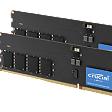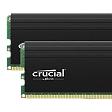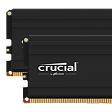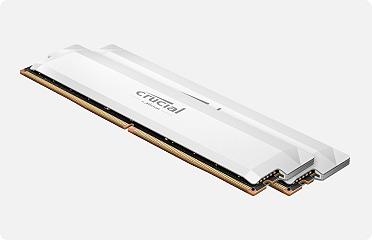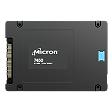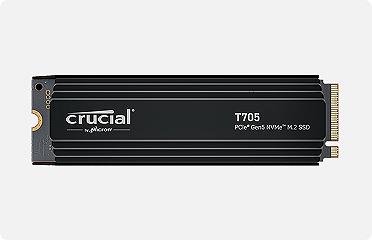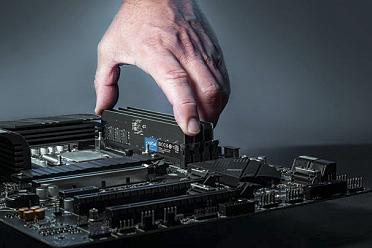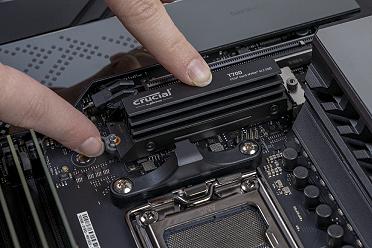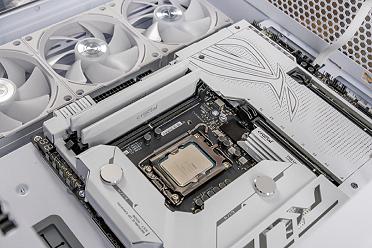What are memory timings?
Memory timings are a set of values that define how quickly a memory module can respond to commands, influencing how efficiently it handles tasks. While most people tend to focus on memory module speed when discussing performance—such as DDR3 at 1600MHz, DDR4 at 2400MHz, or DDR5 at 4800MHz (MT/s)—timings play a crucial role in determining how fast your memory can react to requests and execute actions.
Memory timing breakdown
When we look at timings of memory, they are typically displayed in a numerical format; 9-9-9-24 is an example of a generic DDR3 memory timing. Below is a table that displays some standard timings for different types of DDR memory.
Generation |
CL |
tRCD |
tRP |
tRAS |
|---|---|---|---|---|
|
DDR2 |
5 |
5 |
5 |
15 |
|
DDR3 |
9 |
9 |
9 |
24 |
|
DDR4 |
16 |
16 |
16 |
N/A |
|
DDR5 |
36 |
36 |
36 |
N/A |
Timings are typically broken down to four values:?
CAS Latency (CL): This is the time it takes for a memory module to have data ready at the request of the memory controller
Row Column Delay (tRCD): The time it takes to read memory after the memory is ready
Row Precharge Time (tRP): The time it takes for memory to have a new row ready for using data
Row Active Time (tRAS): Minimum time required for a row to be active to ensure data can be accessed from it
If you notice the table above has the tRAS value?missing for DDR4 and DDR5, this is because the tRAS value is no longer relevant since it’s been merged into another?number with newer memory technology.
Understanding latency times
The most widely recognized timing for memory is CAS (Column Address Strobe) Latency, since the value is typically?synonymous with performance. However, that number can be misleading at times.
Most people think lower CAS latency is automatically better, as this value is your memory's ability to quickly respond to new information.?This isn't completely accurate though as newer memory types typically have much higher CAS latency times than their previous generation counterparts.
So why do new memory types have slower latency times? Along with different timings, there’s an attribute called Clock Cycle Time. This is a measurement reflective of how quickly the memory can be ready for a new set of commands. New memory types, like DDR5, have significantly faster Clock Cycle Times than older generations.
As the chart below illustrates, this effectively means the True Latency (real speed) is much faster. If you’d like to know more about speed vs latency, check out the?difference between RAM speed and CAS latency.
CL |
tRCD |
tRP |
tRAS |
|---|---|---|---|
|
This is the time it takes for a memory module to have data ready upon request of the memory controller |
The time it takes to read memory after the memory is ready |
The time it takes for memory to have a new row ready for using data |
Minimum time required for a row to be active to ensure data can be accessed from it |
Technology |
Module Speed (MT/s) |
Clock Cycle Time (ns) |
CAS Latency (CL) |
True Latency (ns) |
|---|---|---|---|---|
|
DDR2 |
667 |
3.00 |
5 |
14.99 |
|
DDR2 |
800 |
2.50 |
6 |
15.00 |
|
DDR3 |
1333 |
1.50 |
9 |
13.50 |
|
DDR3 |
1600 |
1.25 |
11 |
13.75 |
|
DDR4 |
1866 |
1.07 |
13 |
13.93 |
|
DDR4 |
2133 |
0.94 |
15 |
14.06 |
|
DDR4 |
2400 |
0.83 |
17 |
14.17 |
|
DDR4 |
2666 |
0.75 |
18 |
13.50 |
|
DDR5 |
4800 |
0.41 |
34 |
14.17 |
|
DDR5 |
6400 |
0.31 |
40 |
12.50 |
Memory Clocking
Overclocking is a term for improving the speed and performance of a computer by increasing the clock speed of internal components like the CPU and RAM, which increases the max speed the component operates at.
A computer with previous generations of RAM might benefit from overclocking to breathe new life into older computers and improve overall performance. Overclocking is not without risk though. It can void the warranty on the product and even lead to overheating and component failure if done incorrectly.
Crucial Pro OC Gaming Memory gives you improved speed and performance right out of the box in addition to offering stable overclocking capabilities with both Intel XMP 3.0 and AMD EXPO. Crucial gives you the flexibility to optimize your RAM. If you’re interested in getting more out of your memory, check out how to overlock RAM.
Conclusion
You shouldn't worry about your memory timings in most cases. As long as you purchase memory that the?Crucial Upgrade Selector?or?System Scanner tool says is compatible with your computer, you can be assured the memory is compatible with your system. Some CPUs are limited with the memory speed and latencies they’ll support, so it’s always a good idea to check the max memory speed of your CPU before paring it with any higher-end memory.
FAQs
-
How do I check my memory timings?
On Windows, you can navigate to System > About to see general information about your RAM, such as the amount of installed memory and the speed. You’ll need to install a third-party program like CPU-Z for exact memory timing.
-
What does XMP do?
Extreme Memory Profile (XMP) is an overclocking feature for RAM. Enabling XMP in a computer BIOS allows you to unlock the full potential of high-speed memory by taking advantage of the higher clock speeds.
For more information, read our article on what is XMP.
-
Is RAM speed limited by the CPU?
Yes. Depending on the processor, it will support various maximum RAM speeds. It’s important to ensure the speed of RAM is compatible with your CPU when looking to buy new memory. If you purchase memory that is faster than your processor can handle, you’ll lose out on the extra power past what the CPU supports.
-
Is lower or higher CAS latency (CL) better for RAM?
Lower CAS latency is better for RAM.?A lower CL value indicates faster access times, meaning the RAM can respond to requests from the CPU more quickly.?This results in improved system responsiveness and performance, especially in latency-sensitive tasks like gaming.
-
How do clock cycle time and CAS latency work together to affect RAM speed?
CAS latency measures how many clock cycles it takes for RAM to respond to a command, while clock cycle time reflects how long each cycle lasts. Together, they determine true latency — the actual time it takes for memory to respond. Even if CAS latency is higher, faster clock cycles (as seen in newer memory like DDR5) can result in lower true latency and better overall performance.
?2025 Micron Technology, Inc. All rights reserved. Information, products, and/or specifications are subject to change without notice. Neither Crucial nor Micron Technology, Inc. is responsible for omissions or errors in typography or photography. Micron, the Micron logo, Crucial, Ballistix, and the Crucial logo are trademarks or registered trademarks of Micron Technology, Inc. All other trademarks and service marks are the property of their respective owners.

